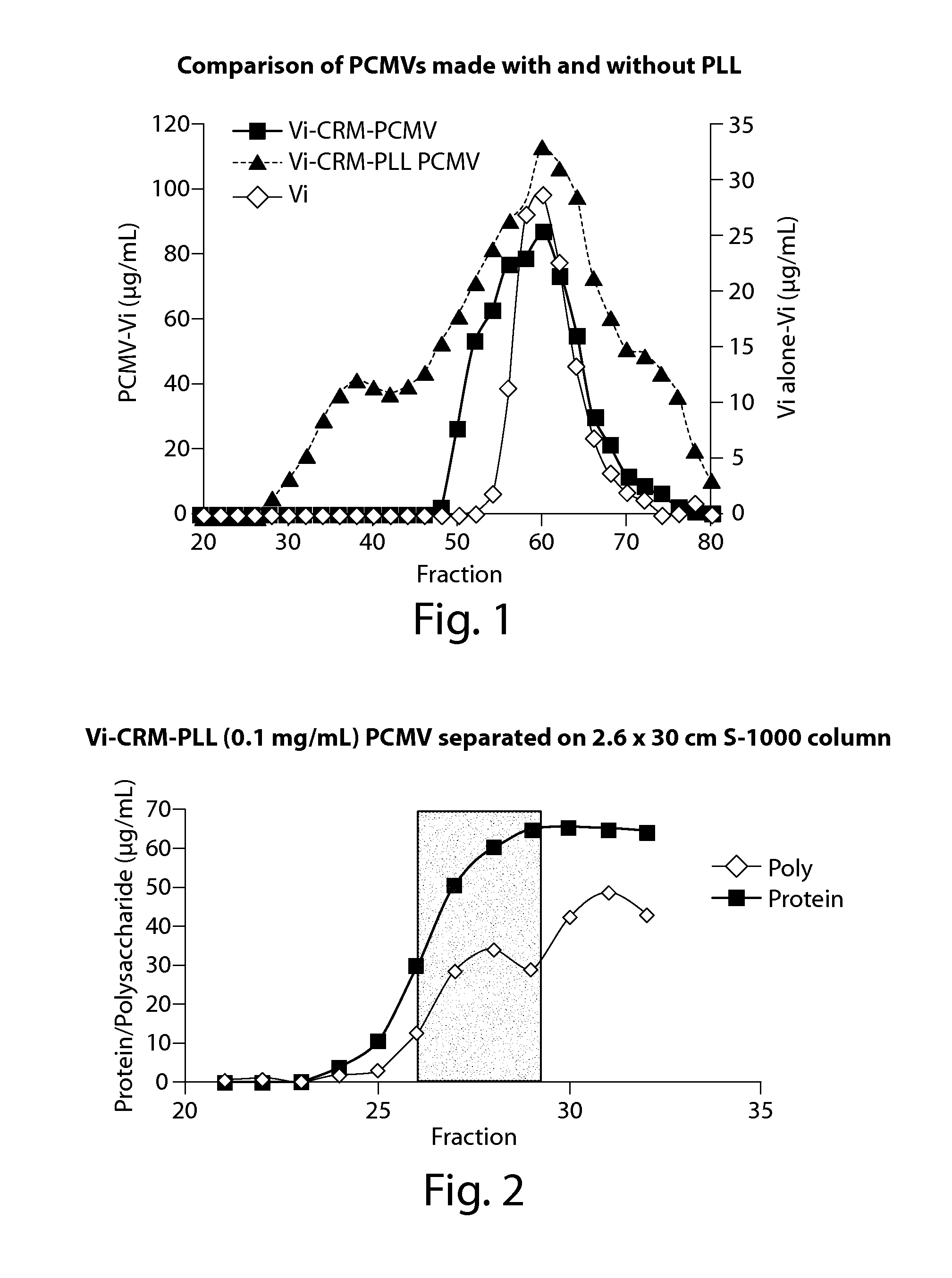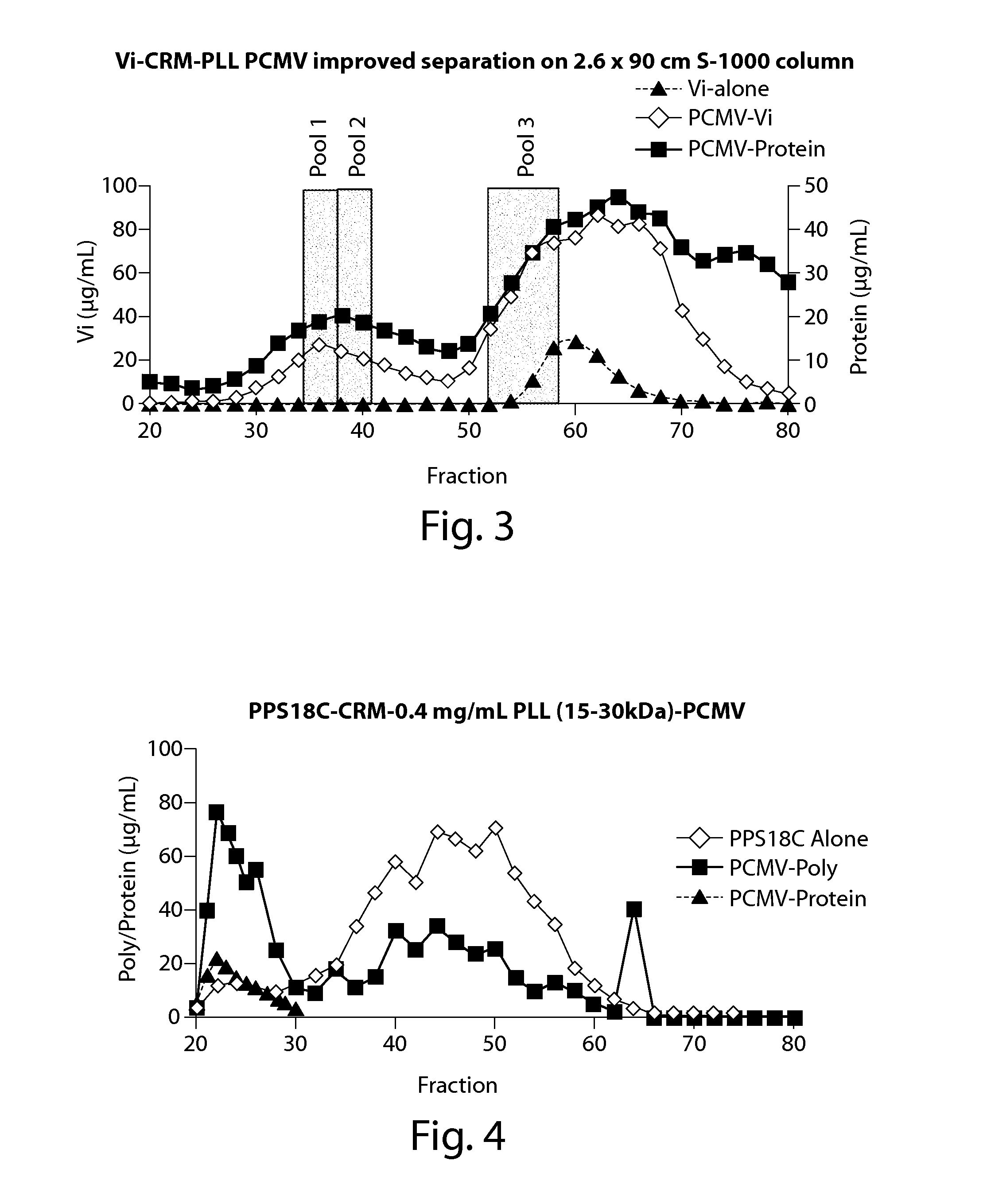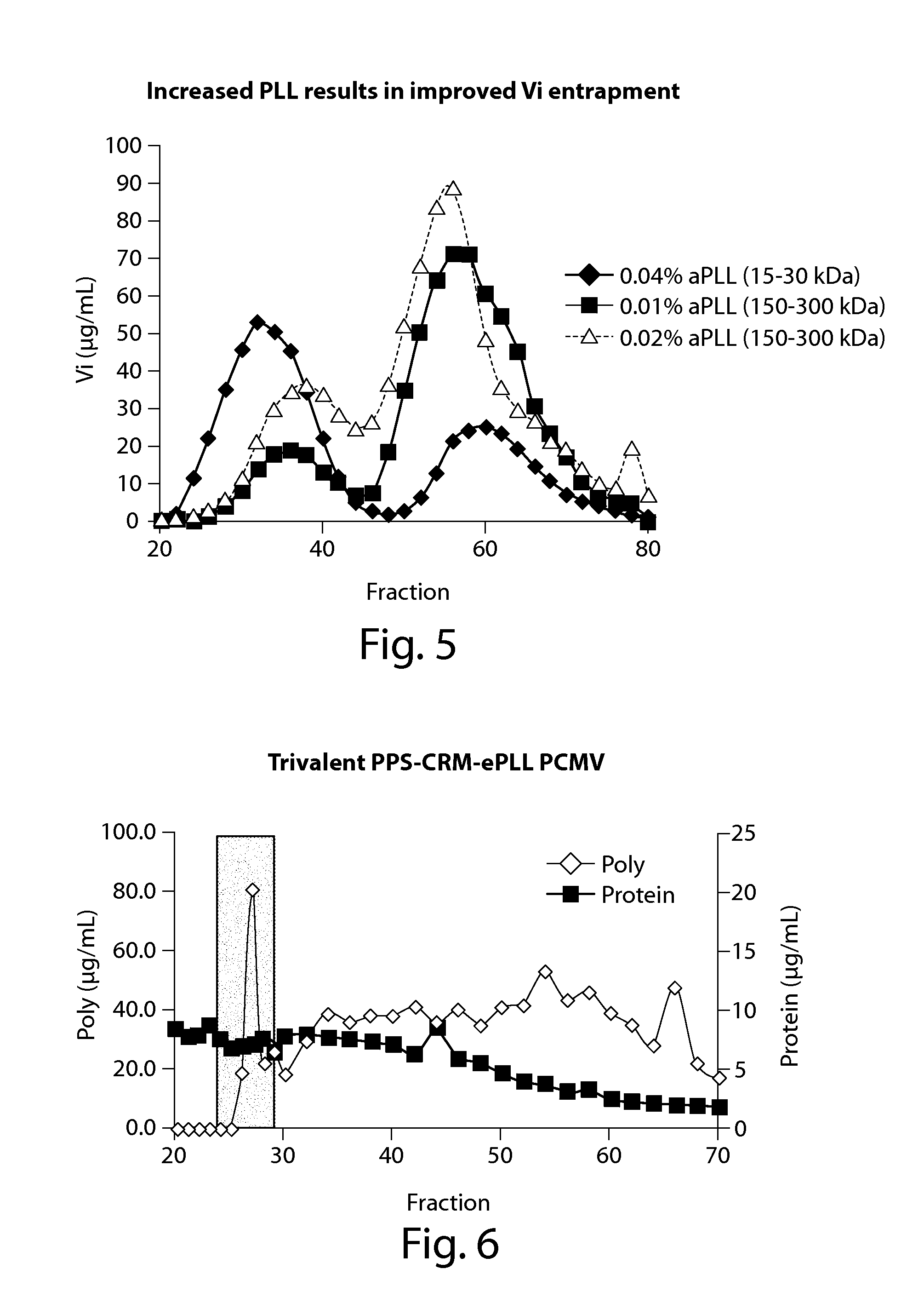Protein Matrix Vaccine Compositions Including Polycations
a technology of protein matrix and vaccine composition, applied in the field of protein matrix vaccine, can solve the problems of complex use of effective vaccines, ineffective immunizing children, and inability to promote long-lasting immunity, so as to improve the quality and improve the effectiveness and yield of protein matrix vaccines.
- Summary
- Abstract
- Description
- Claims
- Application Information
AI Technical Summary
Benefits of technology
Problems solved by technology
Method used
Image
Examples
example 1
Vi-CRM197-αPLL PCMV
[0141]The effect of the addition of polycations in matrix vaccine compositions was investigated using Vi polysaccharide capsule from Salmonella enterica Serovar Typhi as an antigen, using a nontoxic diphtheria toxin CRM 197 as a carrier protein (prepared at Matrivax Research and Development Corporation, Boston, Mass., USA), and α-poly-L-lysine (Sigma-Aldrich, St. Louis, Mo.) as the polycation.
[0142]Vi is a highly anionic homoploymer composed of (α1-4)-D-GalANAc variably O-acetylated at C-3. One of the current approved vaccines for typhoid fever is TyphimVi® (Sanofi Pasteur SA), which contains unconjugated Vi polysaccharide as the antigen. In initial studies to test whether protein matrix vaccines could successfully be used to deliver Vi antigen and elicit an immune response, PCMVs were prepared in reactions containing 4 mg / mL Vi as the antigen and 4 mg / mL CRM197 as the matrix-forming carrier protein. Matrix formation was initiated by the addition of glutaraldehyde...
example 2
Improved Separation of Vi-CRM197-αPLL PCMVs
[0150]In order to better eliminate low molecular weight species (assumed to be non-entrapped, unconjugated antigen polymer) from the PCMV particles, a longer (90 cm) size exclusion column was used. Specifically, a PCMV crosslinking reaction mixture containing 4 mg / ml Vi, 4 mg / ml CRM197 and 0.01% α-poly-L-lysine (150-300 KDa) was prepared. Vi and αPLL were incubated for 15 minutes at room temperature with continuous rocking before the addition of 0.25% glutaraldehyde and CRM197. Incubation was continued for an additional 10 minutes at room temperature with continuous rocking followed by incubation for 24 hr at 4° C. with constant rocking. Following separation of the reaction product on the SEC column, protein and polysaccharide levels were determined using microBCA and stains-all assay, respectively. To determine if the size or molecular weight of PCMV particles affect their immunogenicity, fractions from 3 different elution points from the ...
example 3
PPS18C-CRM197-αPLL PCMV
[0154]With the improvement in Vi entrapment using α-PLL, we next tested whether α-PLL would improve entrapment of the less negatively charged pneumococcal polysaccharide PPS 18C. Unlike Vi, where every sugar residue is negatively charged, PPS 18C has only a single negative charge for every 5 sugar residues. However, inclusion of 0.04% α-PLL (15-30 kDa) in the PCMV reactions resulted in a shift of 35% of the polysaccharide from a lower molecular weight to a higher molecular weight fraction when separated by SEC (FIG. 4). The majority of the CRM197 present in the PCMV reaction also co-localized to the high molecular weight fractions. The polysaccharide present in the high molecular weight fractions was shown to be captured in a PCMV particle by using a capture ELISA assay where the PCMV particles are bound to the ELISA plate via anti-CRM 197 antibodies and the polysaccharide detected using serotype specific antisera (data not shown).
PUM
| Property | Measurement | Unit |
|---|---|---|
| Force | aaaaa | aaaaa |
| Fraction | aaaaa | aaaaa |
| Volume | aaaaa | aaaaa |
Abstract
Description
Claims
Application Information
 Login to View More
Login to View More - R&D
- Intellectual Property
- Life Sciences
- Materials
- Tech Scout
- Unparalleled Data Quality
- Higher Quality Content
- 60% Fewer Hallucinations
Browse by: Latest US Patents, China's latest patents, Technical Efficacy Thesaurus, Application Domain, Technology Topic, Popular Technical Reports.
© 2025 PatSnap. All rights reserved.Legal|Privacy policy|Modern Slavery Act Transparency Statement|Sitemap|About US| Contact US: help@patsnap.com



